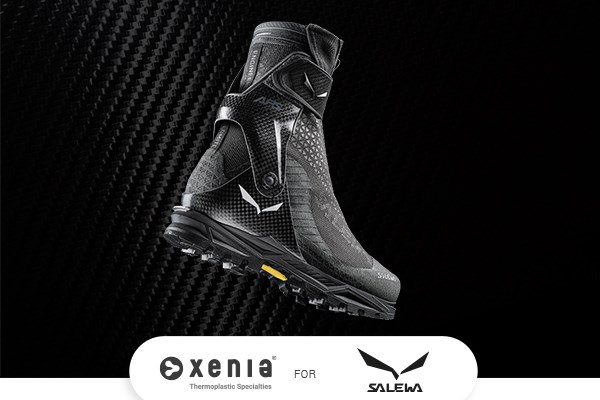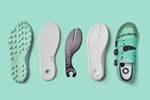Salewa's new hiking boot features thermoplastic composites
The Ortles Couloir boot includes thermoplastic composites from Xenia Materials and was designed to offer both stiffness and flexibility.

Photo Credit: Salewa
’s (Bolzano, Italy) new ultralight, crampon-compatible mountain boot, the Ortles Couloir, weighs in at only 725 grams. The boot is named after the Ortles Mountain, the highest peak of the Rhaetian Alps.
Salewa’s Ortles Couloir will be available in stores beginning in fall 2021. The boot includes thermoplastic composites from (Mussolente, Italy). According to Salewa, the toecap is produced on a polymeric base reinforced with carbon fiber. This carbon solution was designed to offer and guarantee both stiffness and flexibility.
Salewa says the processing of last generation’s carbon fiber-reinforced thermoplastic composites and the injection molding process enable the standardization and realization of structures with improved and optimized thickness, which would otherwise be expensive and difficult to achieve through the traditional lamination process.
The Ortles Couloir’s compact and solid design, characterized by its narrow toe area, reportedly provides more precision while climbing both rock and ice. The boot’s carbon fiber frame offers both lightness and stiffness, and Salewa says its hinged joint closure ensures greater comfort while walking and more grip while climbing.
Enrico Mancinetti, Xenia Materials’ sales manager, says, “Working with Salewa and its partners has represented a great and exciting challenge. We began by developing a specific customization process, which led to the selection of the polymer and a well-defined percentage of carbon fiber.”
Related Content
-
CirculinQ: Glass fiber, recycled plastic turn paving into climate solutions
Durable, modular paving system from recycled composite filters, collects, infiltrates stormwater to reduce flooding and recharge local aquifers.
-
Otto Aviation launches Phantom 3500 business jet with all-composite airframe from Leonardo
Promising 60% less fuel burn and 90% less emissions using SAF, the super-laminar flow design with windowless fuselage will be built using RTM in Florida facility with certification slated for 2030.
-
Low-cost, efficient CFRP anisogrid lattice structures
CIRA uses patented parallel winding, dry fiber, silicone tooling and resin infusion to cut labor for lightweight, heavily loaded space applications.






